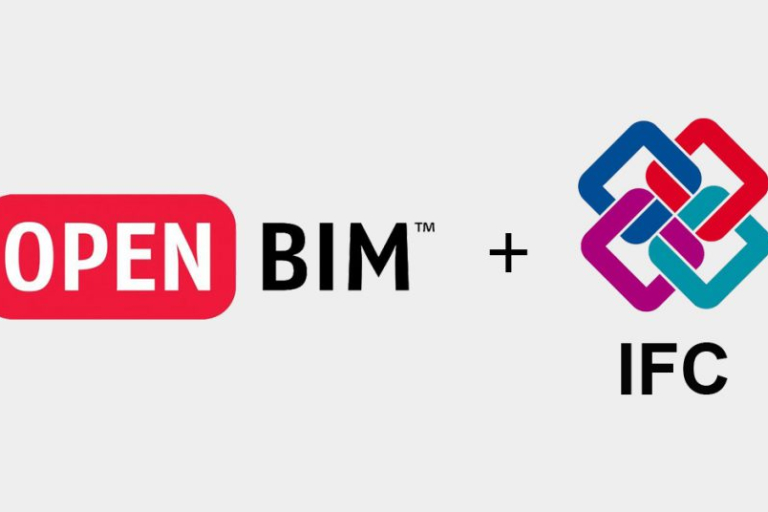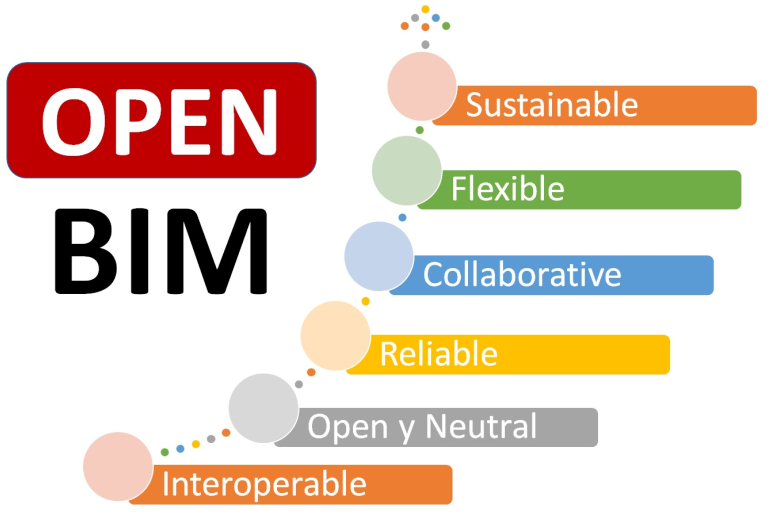In the rapidly evolving landscape of the architecture, engineering, and construction (AEC) industry, Open BIM emerges as a pivotal concept, reshaping how professionals collaborate and communicate throughout the lifecycle of a building project. Open BIM stands as a beacon of interoperability, offering a pathway for seamless data exchange and collaboration across diverse software platforms and stakeholders. In this blog post, we delve into the critical aspects of Open BIM, shedding light on its significance, principles, workflows, challenges, and potential impact on the AEC sector.
Understanding OpenBIM
OpenBIM is not just a software or a format, but rather an approach to Building Information Modeling (BIM) that emphasizes interoperability, collaboration, and vendor neutrality. It aims to break down the barriers between different software platforms and data silos. This foster a collaborative environment where all stakeholders involved in the building lifecycle can work together seamlessly. and running buildings much easier and with fewer mistakes.
Interoperability
OpenBIM utilizes open standards and formats, such as IFC (Industry Foundation Classes), which allows data to be exchanged and used across different BIM applications without loss of information.This means teams can share models and updates regardless of their software, ensuring everyone is working with the same data, reducing errors and rework.

Collaboration
OpenBIM promotes a shared environment where all project stakeholders (architects, engineers, contractors, etc.) have equal access to the latest information. This gives greater transparency and communication, leading to better decision-making and problem-solving.
Vendor Neutrality
OpenBIM breaks free from the limitations of proprietary software and advocates for open-source and vendor-neutral solutions. Therefore, it empowers users to choose the tools that best suit their needs without being locked into specific platforms. It also encourages innovation and competition within the BIM ecosystem, leading to more efficient and cost-effective solutions.
The Importance of Using Open BIM in Construction
Open BIM plays a crucial role in the construction industry and offers several important benefits that contribute to improved project outcomes and efficiency. Moreover, some of the key importance of Open BIM in the construction industry include:
Working Together and Talking
Open BIM helps everyone working on a construction project to collaborate and share information. People like architects, engineers, builders, and others can work better together. They can easily share data and talk more during the whole project time.
Software Compatibility
Open BIM follows open rules; consequently, it ensures that information can move between different computer programs without losing data or causing problems with how things look. This, in turn, makes it easier to share and use data, ultimately lowering the chances of mistakes.
Choosing Different Software
Unlike closed BIM systems that only work with certain computer programs, Open BIM, including Scan to BIM, offers the advantage of allowing people to utilize different software that suits their specific project requirements. This flexibility not only empowers project groups to select the most suitable tools but also prevents them from being constrained by a single company's approach. Furthermore, integrating Scan to BIM into the Open BIM framework enhances the precision and efficiency of architectural projects. Converting laser scan data into BIM models becomes more straightforward, and this seamless integration of tools contributes to highly precise work, fostering effective collaboration among individuals involved in construction projects.
Correct Information
Open BIM keeps data safe and right by meticulously adhering to open rules and facilitating the seamless interaction of various programs. This approach effectively prevents the loss or unauthorized alteration of data, thereby ensuring that all project participants can confidently utilize the most current and accurate information available.
Ready for the Future
Open BIM relies on open rules to make sure data can still be used in the far future. It stops data from getting stuck and makes projects safe for tomorrow. This way, projects can easily work with new tools and technologies that come along.
In the end, Open BIM is important because it helps project teams work well together and choose wisely. This leads to successful construction projects.

Open BIM and the BuildingSMART IFC
In the world of construction, OpenBIM and BuildingSMART Industry Foundation Classes (IFC) have become really important. OpenBIM helps people work together and share information, and it matches well with BuildingSMART IFC. BuildingSMART IFC is a set of rules that help different BIM software programs work together. Let's learn more about them!
Overview of Open BIM and Building Smart IFC
In the OpenBIM way of working, we make a building information model using software like ArchiCAD, Revit, or Tekla. Moreover, we use file types like .PLN (in ArchiCAD) or .RVT (in Revit). When we want to show the model to other team members, we don't use the special file type to avoid unwanted changes. Instead, we use a different file type called IFC and other BIM tools to easily share it. This lets others look at and use the model without changing it. This is called OpenBIM. By using these flexible BIM tools, we can work together well and share data easily, which helps projects go smoothly.
When a structural engineer gets the IFC file, they can open it with the BIM software they like, so they don't have to get Revit or ArchiCAD. This solves the problem of different data formats not working together. Besides, using OpenBIM in our process makes teamwork smooth and data sharing easy among the team. This helps the building work better and faster.

Advantages of Utilizing IFC for BIM Model Sharing
IFC is a special language used in OpenBIM to share information about models. It's really important for teamwork, working together, and talking to each other in construction using computers. As a result, it has many good points.
First, it helps everyone work together, even if they like different computer programs. This makes it easier for people to work as a team. For example, people can be chosen to work together based on how good they are, not just because they have the same software. This makes projects better.
Furthermore, IFC makes a common way to talk about processes. This helps with clear business agreements and making sure the information is good. It's like having a common starting point. This not only makes communication smoother but also makes digital information in the industry easier to use, understand, organize, and keep for a long time.
In addition to that, using IFC with OpenBIM makes it easy to get important project information quickly. This really helps with making good decisions for the whole project, from start to finish.

Conclusion
In short, find out how our Open BIM Services can make your project amazing. Get in touch with us today to see how we can help you do really well in the construction industry. Let's start the journey to better BIM/CIM modeling solutions by clicking here. Let Harmony Advanced Technologies help you make a great future.
Categories





